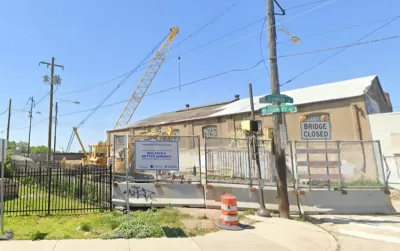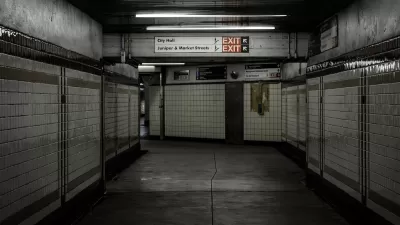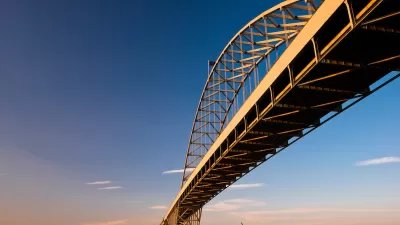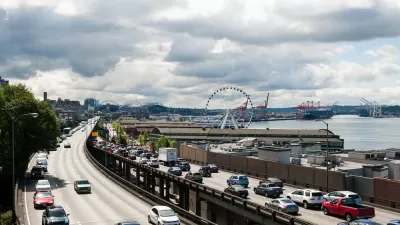City officials cut the ribbon on a major bridge reconstruction.

Philadelphia officials celebrated the completion of the city’s first project using Bipartisan Infrastructure Law funds, the Montgomery Avenue Bridge, reports Harrison Cann in City & State. The city has received $653 million in federal funding since January.
“The Montgomery Avenue Bridge, which had been deteriorating for years, runs over train tracks to connect the Strawberry Mansion neighborhood with North Central Philadelphia.” Cann adds that the project used foam glass as part of its reconstruction — a “lightweight, gravel-like material made from recycled glass.”
Commenting on the historically underserved communities such as Strawberry Mansion that could benefit from the project, Mayor Cherelle Parker said, “If us doing all of this work…does not translate into economic opportunities that people who live in Philadelphia, who traditionally have not had access to these opportunities – if they can’t see, touch and feel the benefit for them – all of this has been for naught.”
FULL STORY: (First Infrstructure law project complete) Philly Mayor Parker, feds mark landmark bridge reopening

Trump Administration Could Effectively End Housing Voucher Program
Federal officials are eyeing major cuts to the Section 8 program that helps millions of low-income households pay rent.

Planetizen Federal Action Tracker
A weekly monitor of how Trump’s orders and actions are impacting planners and planning in America.

Ken Jennings Launches Transit Web Series
The Jeopardy champ wants you to ride public transit.

Sacramento Plans ‘Quick-Build’ Road Safety Projects
The city wants to accelerate small-scale safety improvements that use low-cost equipment to make an impact at dangerous intersections.

How Project Connect Would Change ‘The Drag’
A popular — and sometimes deadly — Austin road will exchange car lanes for light rail.

Milwaukee Road to Get Complete Streets Upgrades
The city will reduce vehicle lanes and build a protected multi-use trail including bioswales and other water retention features on its ‘secret highway.’
Urban Design for Planners 1: Software Tools
This six-course series explores essential urban design concepts using open source software and equips planners with the tools they need to participate fully in the urban design process.
Planning for Universal Design
Learn the tools for implementing Universal Design in planning regulations.
Ada County Highway District
Clanton & Associates, Inc.
Jessamine County Fiscal Court
Institute for Housing and Urban Development Studies (IHS)
City of Grandview
Harvard GSD Executive Education
Toledo-Lucas County Plan Commissions
Salt Lake City
NYU Wagner Graduate School of Public Service





























